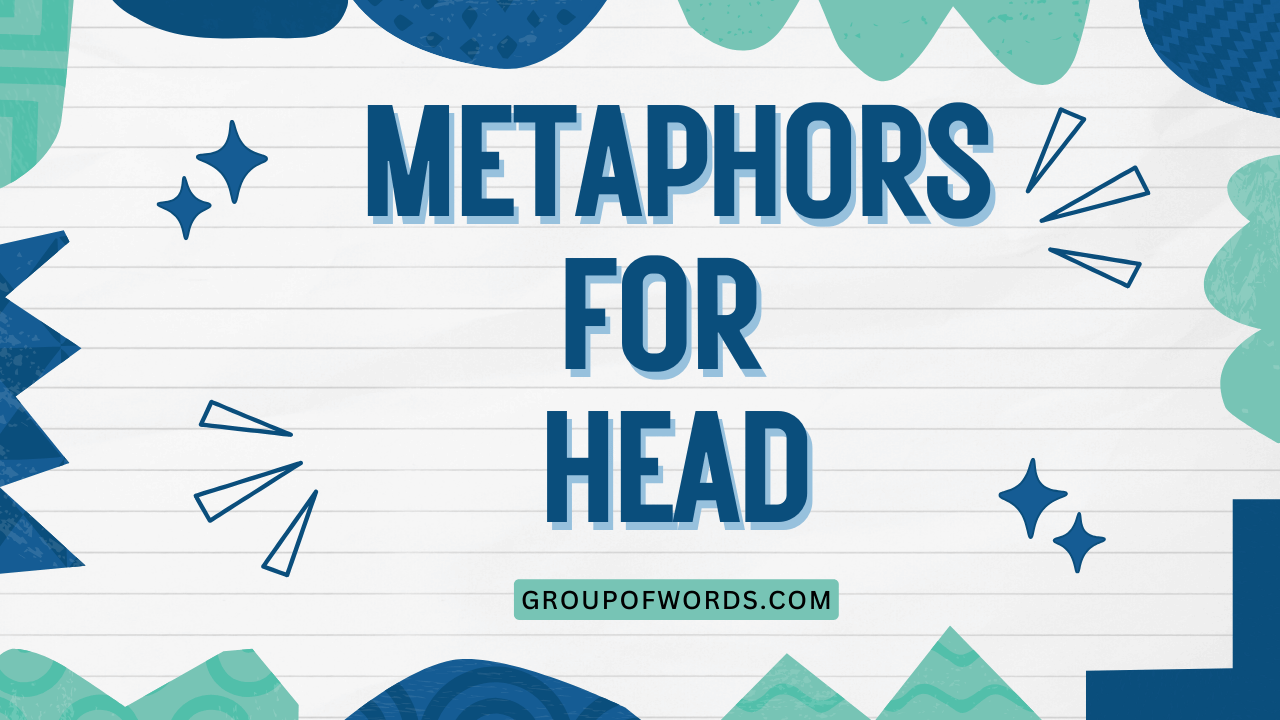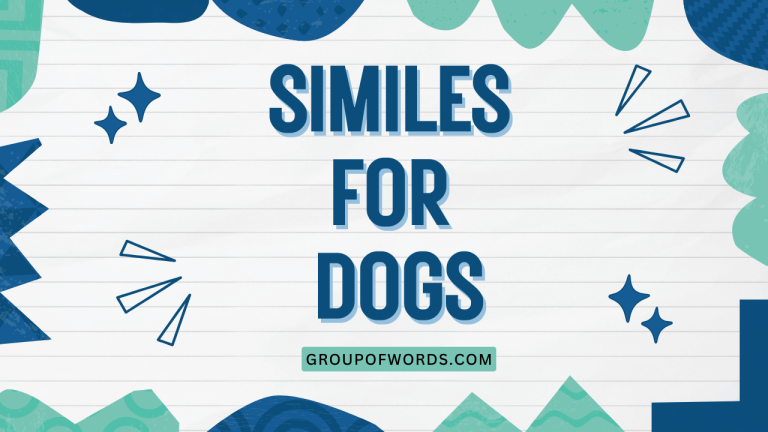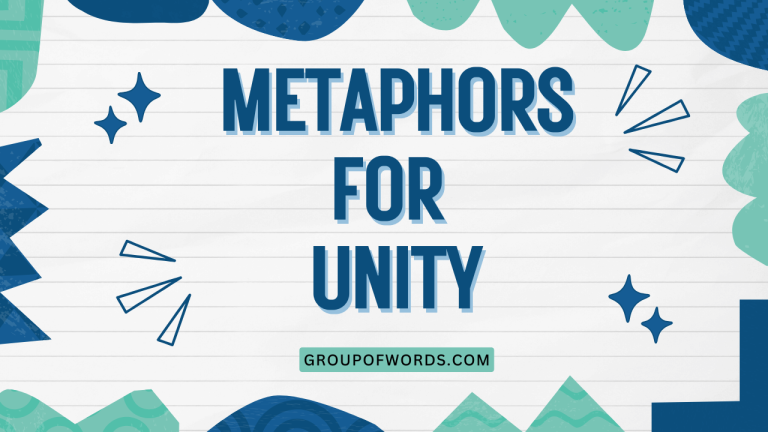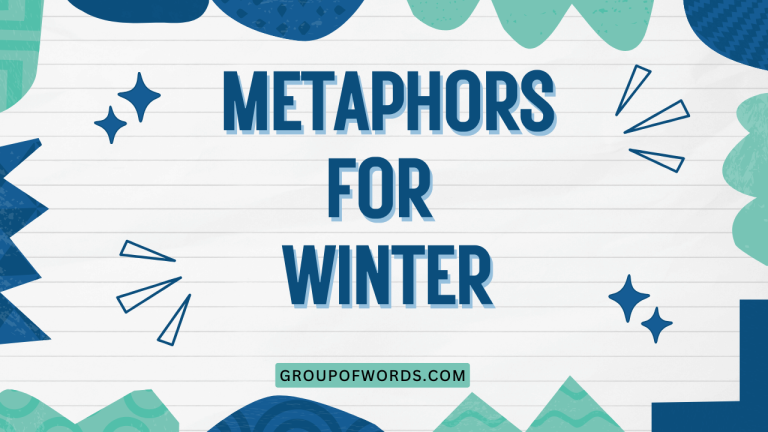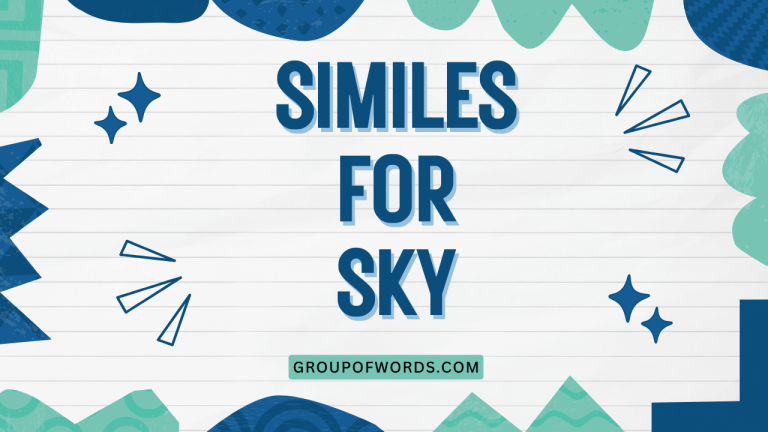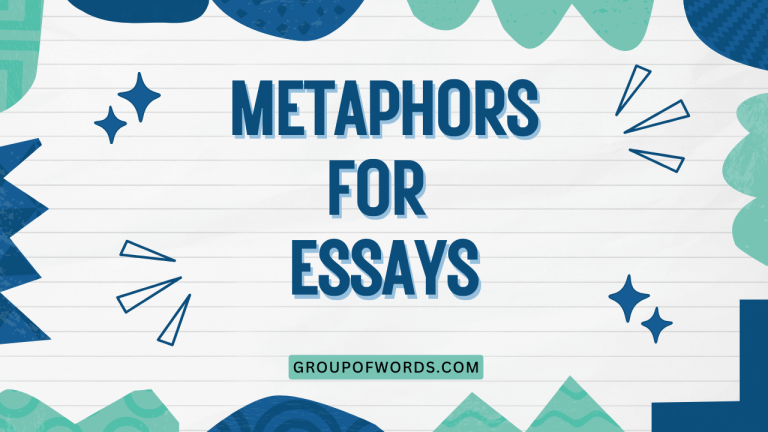Metaphors for Head: A Comprehensive Guide
Understanding metaphors is crucial for mastering the nuances of the English language. Metaphors add color, depth, and creativity to our communication, allowing us to express complex ideas in vivid and relatable ways.
This article focuses specifically on metaphors used to describe the “head,” exploring how different figurative expressions can convey various aspects of intellect, personality, and even physical state. Whether you’re an English language learner, a student of literature, or simply someone who enjoys playing with words, this guide will provide you with a comprehensive understanding of head-related metaphors and their diverse applications.
This article will benefit learners of all levels, from beginners seeking to expand their vocabulary to advanced speakers aiming to refine their expressive abilities. By delving into the world of metaphorical language, you’ll gain a deeper appreciation for the richness and flexibility of English, enhancing both your comprehension and communication skills.
Table of Contents
- Introduction
- Definition of Metaphor
- Structural Breakdown of Head Metaphors
- Types of Metaphors for Head
- Examples of Metaphors for Head
- Usage Rules for Head Metaphors
- Common Mistakes with Head Metaphors
- Practice Exercises
- Advanced Topics
- FAQ
- Conclusion
Definition of Metaphor
A metaphor is a figure of speech that directly compares two unrelated things without using “like” or “as.” It asserts that one thing *is* another, creating a vivid image or deeper understanding through implicit comparison. Metaphors are essential tools for enriching language, adding layers of meaning, and making abstract concepts more accessible. They differ from similes, which use “like” or “as” to make explicit comparisons (e.g., “He is *like* a lion” is a simile; “He *is* a lion” is a metaphor).
In the context of grammar, metaphors function as a type of figurative language, influencing sentence structure and word choice. Understanding how metaphors work allows us to analyze and interpret texts more effectively, as well as to use language more creatively in our own writing and speech.
The effectiveness of a metaphor lies in its ability to evoke a shared understanding or experience, creating a resonance between the speaker and the audience.
Structural Breakdown of Head Metaphors
Head metaphors typically involve substituting the word “head” or a related concept (e.g., brain, mind) with another word or phrase that shares a common characteristic or association. The structure often follows a simple pattern: “[Subject] is [Metaphorical Term].” This comparison then implies certain qualities or attributes of the subject’s head, intellect, or mental state.
For example, saying “He’s a blockhead” implies the person is unintelligent or stubborn.
The power of a head metaphor resides in its ability to transfer meaning from the metaphorical term to the concept of the head. This transfer relies on the listener or reader’s ability to recognize the shared characteristics between the two.
The effectiveness of a metaphor also depends on the context in which it is used. A metaphor that works well in one situation may be inappropriate or confusing in another.
Types of Metaphors for Head
Metaphors for the head can be broadly categorized based on the aspect they emphasize: intellect, mental state, physical state, and personality.
Metaphors for Intellect and Wisdom
These metaphors focus on intelligence, knowledge, and cognitive abilities. They often use terms associated with sharpness, brightness, or capacity to convey the level of intellect.
Examples include “brainy,” “sharp as a tack,” and “a fountain of knowledge.” These metaphors help us understand a person’s intellectual capabilities in a more vivid and memorable way.
Metaphors for Mental State and Emotions
These metaphors describe a person’s emotional condition, mood, or psychological state. They often use terms related to storms, darkness, or confinement to convey feelings of stress, anxiety, or confusion.
Examples include “head in the clouds,” “foggy brain,” and “a mind like a steel trap” (which can also relate to intellect depending on context).
Metaphors for Physical State and Health
These metaphors describe the physical condition of the head, often related to pain, injury, or illness. They use terms associated with pressure, weight, or fragility to convey discomfort or vulnerability.
Examples include “splitting headache,” “head full of cotton,” and “a heavy head.” These metaphors help us express physical sensations in a more descriptive and relatable manner.
Metaphors for Personality and Character
These metaphors use the head as a symbol of a person’s character traits, attitudes, or behaviors. They often use terms associated with stubbornness, arrogance, or creativity to convey these qualities.
Examples include “hardheaded,” “big-headed,” and “level-headed.” These metaphors provide insights into a person’s personality in a concise and impactful way.
Examples of Metaphors for Head
The following sections provide extensive examples of head metaphors, categorized by the aspects they emphasize.
Examples for Intellect and Wisdom
This table provides examples of metaphors that describe intellect and wisdom.
| Metaphor | Meaning | Example Sentence |
|---|---|---|
| Brainy | Intelligent; having a good brain | She’s a brainy student who always gets top marks. |
| Sharp as a tack | Very intelligent and quick-witted | He’s as sharp as a tack; he can solve any problem. |
| A fountain of knowledge | A person who knows a lot about many subjects | Our history professor is a fountain of knowledge. |
| Quick-witted | Able to think and respond quickly | Her quick-witted remarks always make us laugh. |
| Bright spark | A clever and intelligent person | He’s a bright spark in the company, full of innovative ideas. |
| A walking encyclopedia | Someone who knows a lot of facts | Ask Sarah; she’s a walking encyclopedia when it comes to movies. |
| A genius | Exceptionally intelligent or creative | Einstein was a true genius. |
| A mastermind | An intelligent planner or strategist | He was the mastermind behind the successful project. |
| An intellectual powerhouse | A person with great intellectual strength and influence | The university is an intellectual powerhouse. |
| A brilliant mind | A very intelligent and creative person | She has a brilliant mind for mathematics. |
| A deep thinker | Someone who thinks profoundly about important issues | He is known as a deep thinker in the philosophical community. |
| A wise head | A person who gives good advice and makes sound decisions | We always seek his opinion; he has a wise head on his shoulders. |
| On the ball | Alert and competent | She’s really on the ball; she never misses a deadline. |
| Has all their marbles | Sane and intelligent | Don’t worry, he has all his marbles; he knows what he’s doing. |
| Think outside the box | To think creatively and unconventionally | We need someone who can think outside the box to solve this problem. |
| A sharp cookie | A clever and intelligent person (informal) | She’s a sharp cookie; she figured out the puzzle in no time. |
| A bright bulb | A clever and intelligent person (informal) | He’s a bright bulb; he always comes up with good ideas. |
| A smart cookie | A clever and intelligent person (informal) | She’s a smart cookie; she aced the exam. |
| A whiz | An expert in a particular field | He’s a computer whiz; he can fix any problem. |
| Mind like a steel trap | Excellent memory | He has a mind like a steel trap; he remembers everything. |
| Has a good head on their shoulders | Sensible and intelligent | She has a good head on her shoulders; she makes wise decisions. |
| A scholar | A learned person | He is a renowned scholar of ancient languages. |
| An academic | A person who is highly educated and works at a university | She is a respected academic in the field of sociology. |
| A sage | A wise person | The old man was considered a sage by the villagers. |
| A guru | An expert or mentor | He is a marketing guru. |
| A pro | A professional or expert | She is a pro at coding. |
Examples for Mental State and Emotions
This table provides examples of metaphors that describe mental state and emotions.
| Metaphor | Meaning | Example Sentence |
|---|---|---|
| Head in the clouds | Daydreaming; not paying attention to reality | He always has his head in the clouds during class. |
| Foggy brain | Confused or unclear thinking | I have a foggy brain after staying up all night. |
| Mind like a steel trap | Excellent memory, can also imply obsessive thinking | She has a mind like a steel trap when it comes to details. |
| Head spinning | Feeling overwhelmed or confused | After the meeting, my head was spinning with new information. |
| Head full of worries | Anxious and preoccupied | He has a head full of worries about the upcoming exam. |
| Mind racing | Thoughts moving quickly and uncontrollably | Her mind was racing with possibilities. |
| Head swimming | Feeling dizzy or confused | After reading the complex article, my head was swimming. |
| Head pounding | Experiencing a severe headache | My head is pounding after the loud concert. |
| Head throbbing | Experiencing a pulsating headache | Her head was throbbing from the stress. |
| Head aching | Experiencing a mild headache | My head is aching after staring at the screen all day. |
| Heavy head | Feeling burdened or tired | I have a heavy head after a long day at work. |
| Lightheaded | Feeling dizzy or faint | She felt lightheaded after skipping breakfast. |
| Out of their mind | Extremely upset or angry | He was out of his mind with rage. |
| Beside themselves | Overcome with emotion | They were beside themselves with joy. |
| Lost their head | To lose control of one’s emotions | He lost his head and started shouting. |
| Head over heels | Deeply in love | They are head over heels for each other. |
| Mind blown | Extremely surprised or impressed | His performance blew my mind. |
| Space cadet | Someone who is out of touch with reality | He’s such a space cadet; he never seems to know what’s going on. |
| Head in the sand | Ignoring reality | They have their head in the sand about the environmental issues. |
| Mind like a sieve | Having a poor memory | I have a mind like a sieve; I can never remember names. |
| Cabin fever | Feeling restless or irritable due to being confined | After being stuck inside for days, I started to get cabin fever. |
| Brain fart | A temporary mental lapse | I had a brain fart and forgot her name. |
Examples for Physical State and Health
This table provides examples of metaphors that describe physical state and health related to the head.
| Metaphor | Meaning | Example Sentence |
|---|---|---|
| Splitting headache | A severe headache | I have a splitting headache from all the noise. |
| Head full of cotton | Feeling spacey or disoriented | My head feels full of cotton after taking the medicine. |
| Heavy head | Feeling tired or ill | I woke up with a heavy head this morning. |
| Head throbbing | Experiencing a pulsating headache | My head is throbbing from the lack of sleep. |
| Head swimming | Feeling dizzy or nauseous | After the roller coaster, my head was swimming. |
| Head pounding | Experiencing a severe, throbbing headache | My head is pounding after the loud concert. |
| Head aching | Having a mild headache | My head is aching from staring at the computer screen all day. |
| Lightheaded | Feeling dizzy or faint | She felt lightheaded after standing up too quickly. |
| Giddy | Feeling dizzy or lightheaded | The altitude made him feel giddy. |
| Nauseous | Feeling sick to the stomach | The bumpy ride made her feel nauseous. |
| Under the weather | Feeling unwell | I’m feeling a bit under the weather today. |
| Run down | Feeling exhausted or depleted | I’m feeling run down after working long hours. |
| Wiped out | Extremely tired | I was wiped out after the marathon. |
| Brain dead | Extremely tired or unable to think clearly | I’m completely brain dead after the exam. |
| Head case | Someone who is mentally unstable or neurotic | He’s a bit of a head case; he worries about everything. |
| On the mend | Recovering from an illness | He’s on the mend after his surgery. |
| Back on your feet | Recovered from an illness | He’s finally back on his feet after being sick for a week. |
| Fighting fit | In excellent physical condition | He’s fighting fit and ready for the competition. |
| Fit as a fiddle | In excellent physical condition | She’s fit as a fiddle despite her age. |
| Full of beans | Energetic and lively | The children are full of beans this morning. |
| Bouncing back | Recovering quickly | She’s bouncing back after her illness. |
| Out of sorts | Not feeling well | I’m feeling a bit out of sorts today. |
Examples for Personality and Character
This table provides examples of metaphors that describe personality and character using the head.
| Metaphor | Meaning | Example Sentence |
|---|---|---|
| Hardheaded | Stubborn; unwilling to change one’s mind | He’s so hardheaded; he never listens to advice. |
| Big-headed | Arrogant; having an excessively high opinion of oneself | He’s become big-headed since his promotion. |
| Level-headed | Calm and rational; able to make good decisions | She’s a level-headed leader who keeps everyone calm. |
| Hotheaded | Easily angered; quick to lose one’s temper | He’s a bit hotheaded; try not to provoke him. |
| Empty-headed | Unintelligent; lacking in common sense | She’s not as empty-headed as she seems. |
| Airhead | A silly or unintelligent person | He dismissed her as an airhead. |
| Blockhead | A stupid person | Don’t be such a blockhead; think before you act. |
| Wooden-headed | Stupid or inflexible | He’s so wooden-headed; he never gets the joke. |
| Soft in the head | Slightly crazy or foolish | He must be soft in the head to do something like that. |
| Two-faced | Deceptive or insincere | She’s two-faced; you can’t trust her. |
| Thick-skinned | Insensitive to criticism | You need to be thick-skinned to survive in this industry. |
| Thin-skinned | Sensitive to criticism | He’s very thin-skinned; be careful what you say. |
| Strong-willed | Determined and resolute | She’s a strong-willed woman who always gets what she wants. |
| Weak-willed | Lacking determination | He’s too weak-willed to resist temptation. |
| Single-minded | Focused and determined | She’s single-minded in her pursuit of success. |
| Open-minded | Willing to consider new ideas | We need an open-minded approach to solving this problem. |
| Absent-minded | Forgetful or preoccupied | He’s so absent-minded; he always forgets his keys. |
| Scatterbrained | Disorganized and forgetful | She’s a bit scatterbrained; she can never keep track of things. |
| Headstrong | Willful and determined, often to the point of being stubborn | She’s a headstrong girl who always does what she wants. |
| Bullheaded | Extremely stubborn | He’s too bullheaded to admit he’s wrong. |
| Pig-headed | Stubborn and unreasonable | He’s being pig-headed; he won’t listen to reason. |
| Kind-hearted | Compassionate and generous | She’s a kind-hearted woman who always helps others. |
| Cold-hearted | Lacking in empathy or compassion | He’s a cold-hearted man who doesn’t care about anyone. |
| Warm-hearted | Kind and generous | She’s a warm-hearted person who is always there for her friends. |
Usage Rules for Head Metaphors
Using head metaphors effectively requires understanding their connotations and appropriateness in different contexts. Here are some general rules:
- Consider your audience: Some metaphors may be too informal or offensive for certain audiences.
- Be mindful of context: The meaning of a metaphor can change depending on the situation.
- Avoid clichés: Overused metaphors can sound stale and unoriginal. Try to find fresh and creative ways to express your ideas.
- Maintain consistency: Avoid mixing metaphors that create conflicting images.
- Ensure clarity: The meaning of your metaphor should be clear to your audience. If it’s too obscure, it will be ineffective.
For example, saying someone is “soft in the head” might be acceptable among close friends but would be inappropriate in a professional setting. Similarly, using a metaphor that only makes sense within a specific subculture or context might confuse those unfamiliar with it.
Common Mistakes with Head Metaphors
Here are some common mistakes to avoid when using head metaphors:
| Incorrect Example | Correct Example | Explanation |
|---|---|---|
| He’s a fountain of worries. | He has a head full of worries. | “Fountain” typically refers to knowledge or ideas, not worries. |
| She’s splitting with intelligence. | She’s sharp as a tack. | “Splitting” is usually associated with headaches, not intelligence. |
| His mind is a racing sieve. | His mind is racing. / He has a mind like a sieve. | Mixing metaphors (“racing” and “sieve” create a confusing image). |
| She’s head over shoes in love. | She’s head over heels in love. | “Head over heels” is the correct idiom. |
| He’s a hard brain. | He’s hardheaded. | “Hardheaded” is the established metaphor for stubbornness. |
Avoid mixing metaphors, using inappropriate terms, or misremembering common idioms. Always double-check your usage to ensure clarity and accuracy.
Practice Exercises
Test your understanding of head metaphors with these exercises.
Exercise 1: Fill in the Blanks
Complete the following sentences with appropriate head metaphors.
| Question | Answer |
|---|---|
| 1. After the intense exam, my ______ was ______. | 1. After the intense exam, my brain was dead. |
| 2. He’s so ______; he never listens to anyone. | 2. He’s so hardheaded; he never listens to anyone. |
| 3. She’s a ______; she always knows the answer. | 3. She’s a brainy student; she always knows the answer. |
| 4. I woke up with a ______ this morning. | 4. I woke up with a heavy head this morning. |
| 5. She’s ______ in love with him. | 5. She’s head over heels in love with him. |
| 6. Don’t be such a ______; use your common sense. | 6. Don’t be such a blockhead; use your common sense. |
| 7. He has his ______ about the issue. | 7. He has his head in the sand about the issue. |
| 8. She’s a ______ person. | 8. She’s a level-headed person. |
| 9. After the loud concert, my ______ was ______. | 9. After the loud concert, my head was pounding. |
| 10. He’s such a ______; he’s always forgetting things. | 10. He’s such a space cadet; he’s always forgetting things. |
Exercise 2: Match the Metaphor to its Meaning
Match the head metaphor in Column A with its meaning in Column B.
| Column A (Metaphor) | Column B (Meaning) | Answer |
|---|---|---|
| 1. Big-headed | a. Feeling overwhelmed or confused | 1. b |
| 2. Head spinning | b. Arrogant; having an excessively high opinion of oneself | 2. a |
| 3. Hardheaded | c. Having a poor memory | 3. e |
| 4. Mind like a sieve | d. Calm and rational | 4. c |
| 5. Level-headed | e. Stubborn; unwilling to change one’s mind | 5. d |
| 6. Under the weather | f. Energetic and Lively | 6. h |
| 7. Brain Fart | g. Temporarily unable to think clearly | 7. g |
| 8. Full of beans | h. Feeling unwell | 8. f |
Exercise 3: Identify the Type of Metaphor
Determine whether each metaphor relates to (a) intellect, (b) mental state, (c) physical state, or (d) personality.
| Metaphor | Type |
|---|---|
| 1. Sharp as a tack | 1. a |
| 2. Head in the clouds | 2. b |
| 3. Splitting headache | 3. c |
| 4. Hardheaded | 4. d |
| 5. Foggy brain | 5. b |
| 6. Level-headed | 6. d |
| 7. Head throbbing | 7. c |
| 8. Walking encyclopedia | 8. a |
Advanced Topics
For advanced learners, consider exploring the following topics:
- Cognitive Linguistics: Investigate how metaphors shape our understanding of abstract concepts.
- Literary Analysis: Analyze how authors use head metaphors to create character development and thematic depth.
- Cross-Cultural Metaphors: Compare and contrast head metaphors across different languages and cultures.
- The Evolution of Metaphors: Research how metaphors change over time and how new metaphors emerge.
By delving into these areas, you can gain a deeper appreciation for the complexity and richness of metaphorical language.
FAQ
Here are some frequently asked questions about head metaphors:
-
What is the difference between a metaphor and a simile?
A metaphor directly compares two things without using “like” or “as,” while a simile uses “like” or “as” to make an explicit comparison. For example, “He is a lion” is a metaphor, while “He is like a lion” is a simile.
-
Why are metaphors important in language?
Metaphors add color, depth, and creativity to language. They help us express complex ideas in vivid and relatable ways, making our communication more engaging and memorable.
-
How can I improve my use of metaphors?
Read widely, pay attention to how others use metaphors, and practice using them in your own writing and speech. Be mindful of your audience and context, and avoid clichés.
-
Are some metaphors considered offensive?
Yes, some metaphors can be offensive depending on the context and audience. Be mindful of the connotations of the words you use and avoid metaphors that perpetuate stereotypes or belittle others.
-
What is a mixed metaphor?
A mixed metaphor combines two or more incompatible metaphors, creating a confusing or nonsensical image. Avoid mixing metaphors to ensure clarity and coherence.
-
How do metaphors evolve over time?
Metaphors evolve as language changes and new concepts emerge. Some metaphors become clichés over time, while others fade into obscurity. New metaphors are constantly being created to express new ideas and experiences.
-
Can metaphors be translated directly into other languages?
Not always. Some metaphors are culturally specific and may not have direct equivalents in other languages. Translating metaphors often requires finding a similar figurative expression that resonates with the target audience.
-
What is the role of context in understanding metaphors?
Context is crucial for understanding metaphors. The meaning of a metaphor can change depending on the situation, the speaker, and the audience. Pay attention to the surrounding words and the overall tone to interpret metaphors accurately.
Conclusion
Mastering metaphors for the head is a valuable skill that enhances your understanding and use of the English language. By recognizing the different types of head metaphors and understanding their nuances, you can express yourself more creatively and effectively.
Remember to consider your audience, context, and avoid common mistakes like mixing metaphors or using inappropriate terms.
Continue to practice using head metaphors in your writing and speech, and explore advanced topics to deepen your knowledge. With dedication and practice, you can become a master of metaphorical language, adding richness and depth to your communication.
Embrace the power of figurative language and unlock new levels of expressive ability.
